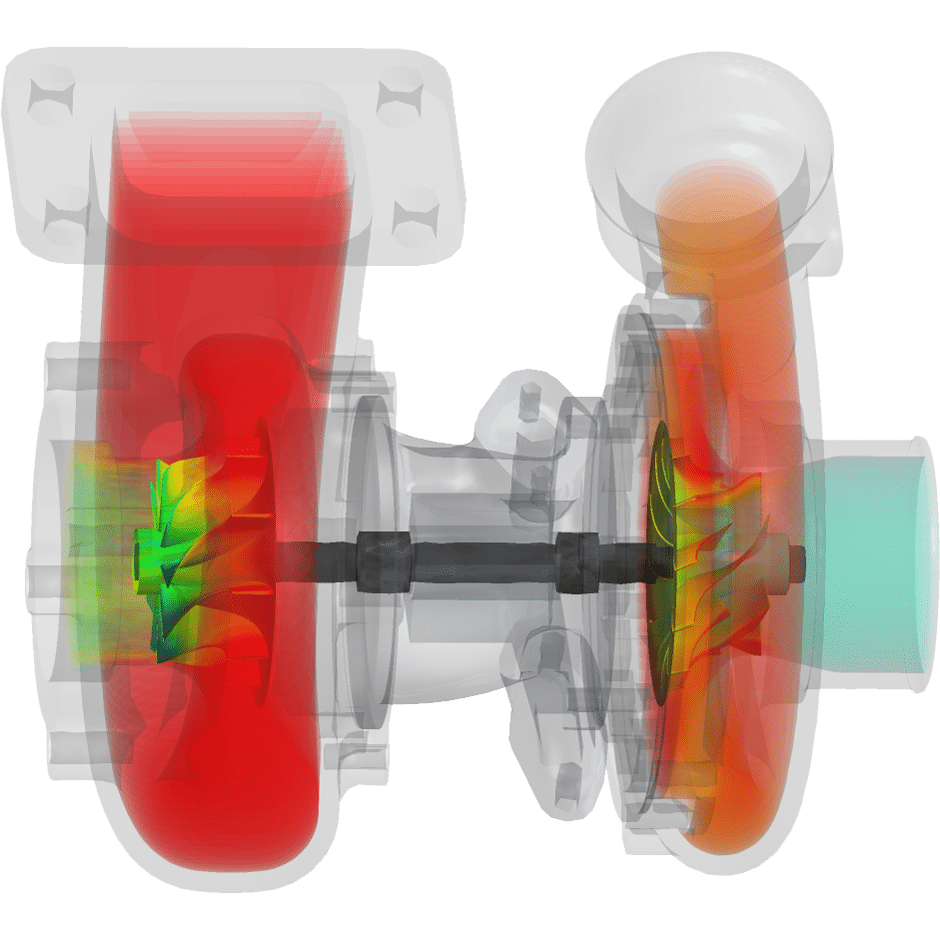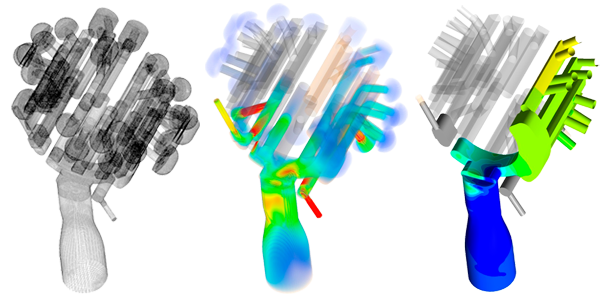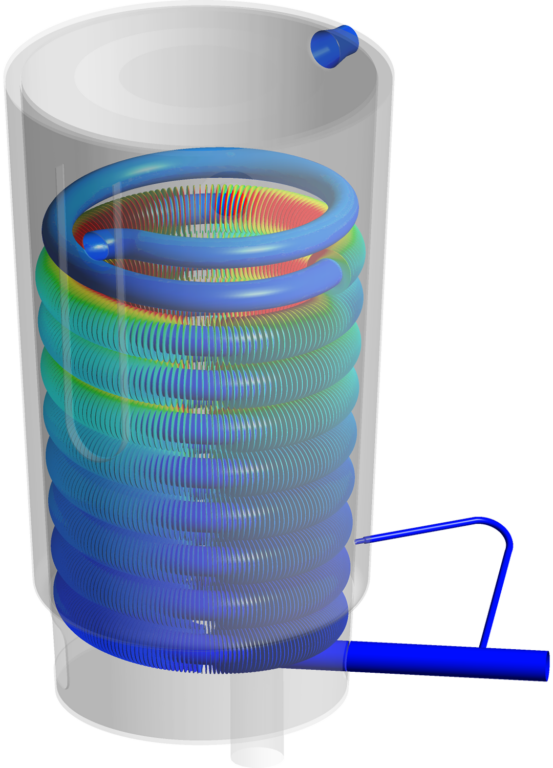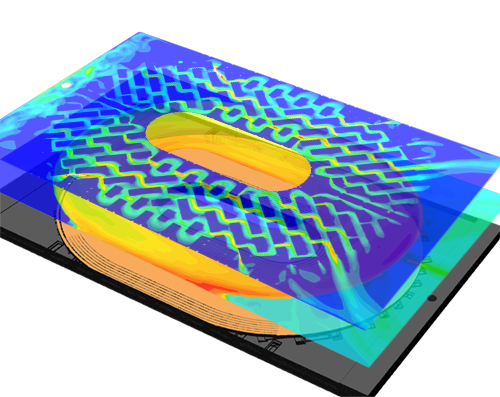Context
Turbochargers exploit the energy contained in the exhaust gases produced by combustion in an engine. To understand the benefits of turbochargers, let’s take a look at the classic operation of a four-stroke engine, with its four phases:
- Induction of the air/fuel mixture
- Compression of the mixture in the combustion chamber
- Expansion, caused by the explosion of the fuel.
- Exhaust, allowing hot burnt gases to be expelled.
Instead of discharging the exhaust gases directly, the turbocharger recovers the energy they contain to drive a turbine connected to a shaft. On the other side of the shaft, a turbine wheel is in turn driven: it draws in and compresses the outside air, which is then injected into the engine. Turbocompressors significantly increase cycle efficiency and thus engine power.
Naturally, those involved in the transport sector are looking to optimize the efficiency of each of the components that make up the turbocharger. The aim is not only to increase vehicle performance, but also to reduce fuel consumption, and hence costs and environmental impact.




